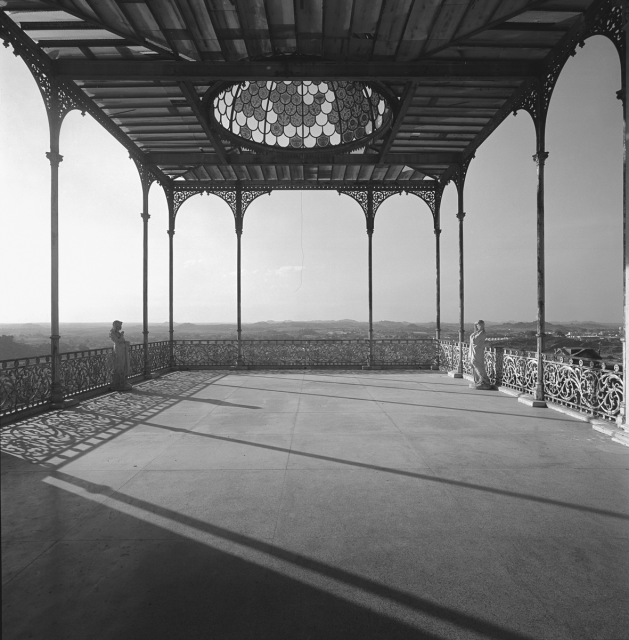TITLE_NAME :
Derry Moore: In the Shadow of the Raj.
20/01/2018 - 10/02/2018
Tasveer Gallery
Sua House
26/1 Kasturba Cross Road
560001 Bangalore
www.tasveerarts.com
Tasveer, in partnership with Dauble, is delighted to present the work of celebrated English photographer, Derry Moore, with a new exhibition and publication: In the Shadow of the Raj. While the exhibition features a distilled selection of 28 photographs, the more comprehensive book (published by Prestel UK) features 90 images and is accompanied by a foreword by Sir Mark Tully. Moore began photographing India during a series of visits in early 1976. He was fascinated by a palpably observable hybridity, and particularly intrigued by the anachronistic architecture of Calcutta and Bombay, which exemplified this hybridity. His architectural studies, interiors,landscapes and portraits seen in Tasveer’s exhibition and book, highlight enduring colonial legacies
in the visual and social fabric of India.
Moore writes:
“My initial idea had been to photograph some of the places whose days, I knew, were numbered. In the event what fascinated me was not simply the places themselves but also the hybrid quality of many of the lesser buildings that had been constructed since the first arrival of the British in India. A cultural osmosis was clearly discernible, that of British and European architecture on Indian buildings, and that of India and its climate, as well styles, on the British. In the latter instance, a grandeur and a sense of space, such as are rarely seen in Britain, were frequently the outcome: rooms were higher, windows larger, corridors wider, detail more lavish; the porticoes of relatively humble houses might have been snatched from the front of the British Museum. The appearance of their inhabitants too surprised me. I had been expecting folkloric looks, whereas what I found was far more interesting – the look and atmosphere of another century.”
20/01/2018 - 10/02/2018
Tasveer Gallery
Sua House
26/1 Kasturba Cross Road
560001 Bangalore
www.tasveerarts.com
Tasveer, in partnership with Dauble, is delighted to present the work of celebrated English photographer, Derry Moore, with a new exhibition and publication: In the Shadow of the Raj. While the exhibition features a distilled selection of 28 photographs, the more comprehensive book (published by Prestel UK) features 90 images and is accompanied by a foreword by Sir Mark Tully. Moore began photographing India during a series of visits in early 1976. He was fascinated by a palpably observable hybridity, and particularly intrigued by the anachronistic architecture of Calcutta and Bombay, which exemplified this hybridity. His architectural studies, interiors,landscapes and portraits seen in Tasveer’s exhibition and book, highlight enduring colonial legacies
in the visual and social fabric of India.
Moore writes:
“My initial idea had been to photograph some of the places whose days, I knew, were numbered. In the event what fascinated me was not simply the places themselves but also the hybrid quality of many of the lesser buildings that had been constructed since the first arrival of the British in India. A cultural osmosis was clearly discernible, that of British and European architecture on Indian buildings, and that of India and its climate, as well styles, on the British. In the latter instance, a grandeur and a sense of space, such as are rarely seen in Britain, were frequently the outcome: rooms were higher, windows larger, corridors wider, detail more lavish; the porticoes of relatively humble houses might have been snatched from the front of the British Museum. The appearance of their inhabitants too surprised me. I had been expecting folkloric looks, whereas what I found was far more interesting – the look and atmosphere of another century.”










